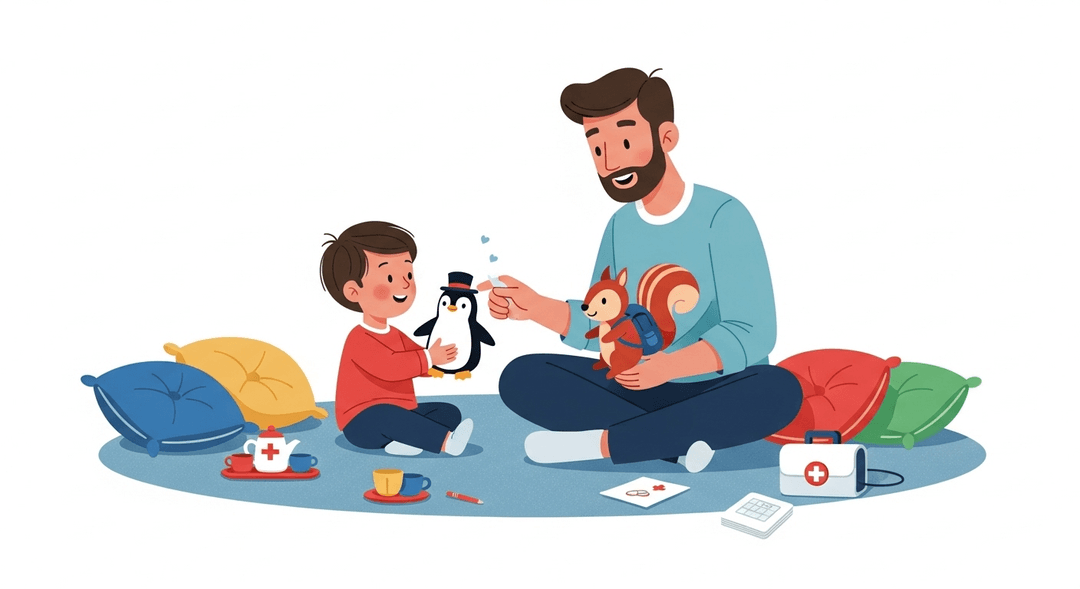Role-Play Social Scenarios
Ever felt like your kid’s social skills are the equivalent of a confused penguin at a squirrel convention? Welcome to the magical (and occasionally awkward) world of role-play! If you’ve ever tried to teach ‘please’ and ‘thank you’ only to be met with blank stares or interpretive dance, this is your jam—get ready to play-act your way through the weirdest (and most adorable) social scenarios.
Role-playing lights up your kid’s social brain like a birthday cake, building empathy, perspective-taking, and flexible thinking. It helps wire up those prefrontal cortex connections for problem-solving and impulse control, and gives both of you a safe space to practice responses before the real world throws curveballs (or, more likely, spilled juice boxes). Bonus: You get to model emotional regulation without actually having to regulate your emotions in public.
How to do it
-
Choose a scenario your child finds challenging, such as greetings, sharing, or asking for help.
-
Gather a couple of toys to use as props, or simply use your silliest voices to bring the scenario to life.
-
Act out the chosen scenario together. Swap roles so your child has a chance to try both sides of the interaction.
-
Keep the activity brief, lighthearted, and fun—there’s no need for a perfect performance.
-
Afterward, have a short conversation about what parts felt easy or tricky. Celebrate the effort with a high-five, even if your pirate accent wasn’t quite convincing.
Tips:
- Focus on making the activity enjoyable rather than perfect.
- Encourage your child to express their feelings about each role.
- Use humor to keep things relaxed and engaging.
- Reinforce that it’s okay to make mistakes while learning.
